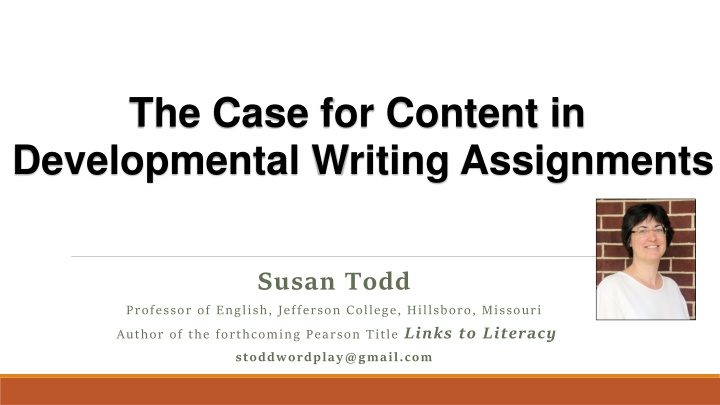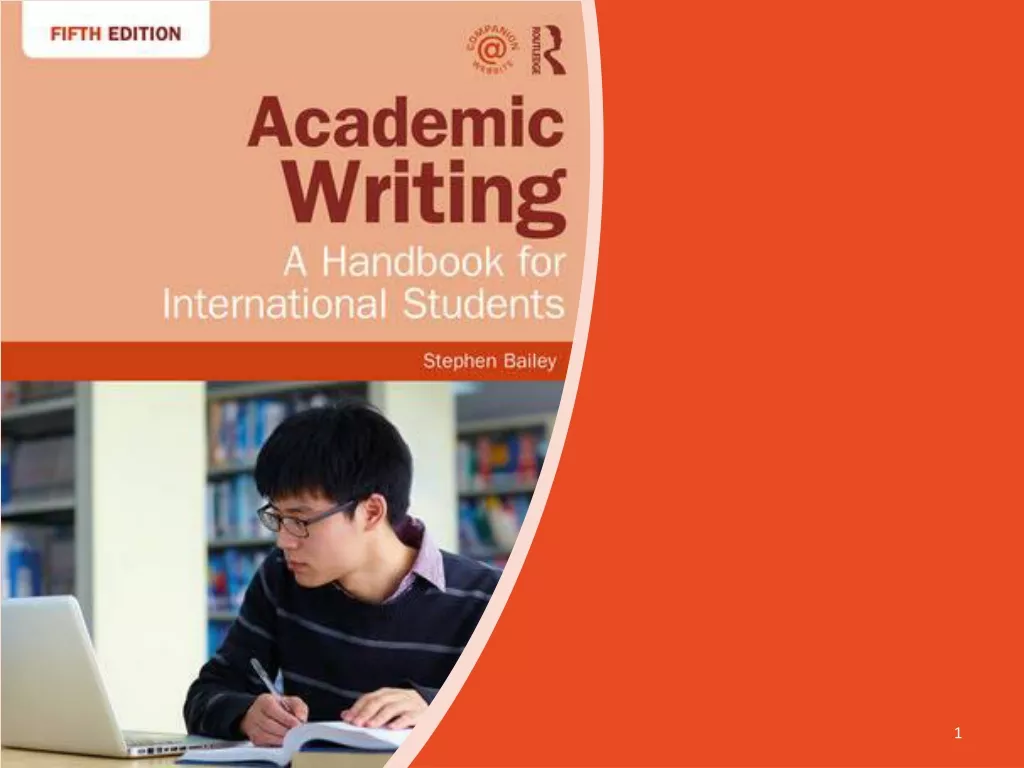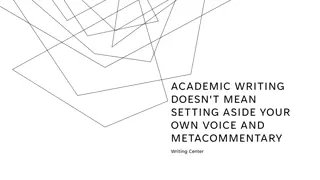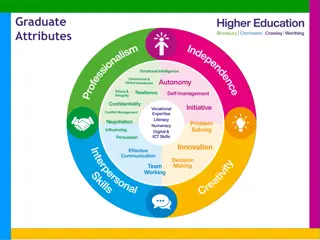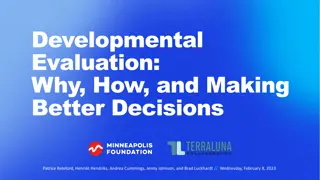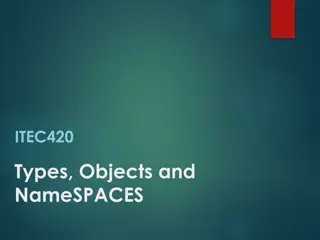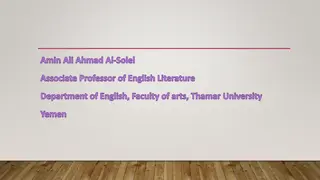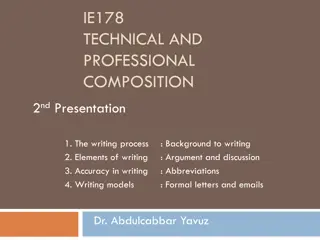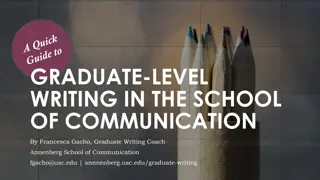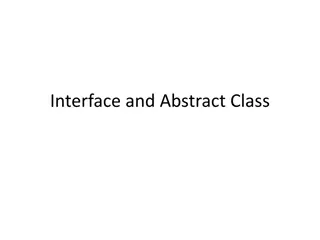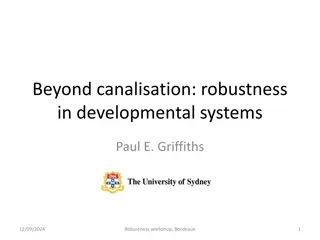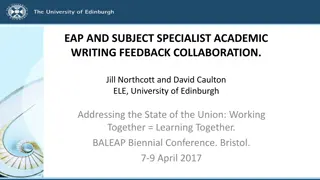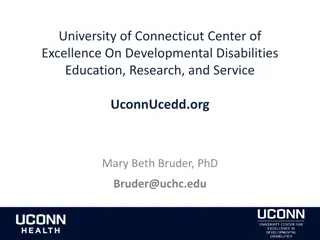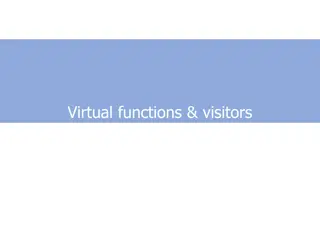The Case for Academic Writing in Developmental Classes
In this insightful discussion, Susan Todd, a Professor of English, presents the importance of focusing on academic writing assignments in developmental writing classes. She reflects on the pitfalls of traditional personal writing assignments and offers a solution to integrate writing with academic reading. Through realizations and dilemmas, Todd emphasizes the need for content-rich writing tasks that challenge students beyond narrative and descriptive modes. Explore the evolution of writing pedagogy and discover practical strategies to engage students effectively.
Download Presentation

Please find below an Image/Link to download the presentation.
The content on the website is provided AS IS for your information and personal use only. It may not be sold, licensed, or shared on other websites without obtaining consent from the author.If you encounter any issues during the download, it is possible that the publisher has removed the file from their server.
You are allowed to download the files provided on this website for personal or commercial use, subject to the condition that they are used lawfully. All files are the property of their respective owners.
The content on the website is provided AS IS for your information and personal use only. It may not be sold, licensed, or shared on other websites without obtaining consent from the author.
E N D
Presentation Transcript
The Case for Content in Developmental Writing Assignments Susan Todd Professor of English, Jefferson College, Hillsboro, Missouri Author of the forthcoming Pearson Title Links to Literacy stoddwordplay@gmail.com
Our Topic Today Why and how to focus on academic writing assignments in developmental writing classes
Dilemma #1 Stack of papers I couldn t face Uninspired assignment and results Some poorly written but emotionally wrenching papers Occasional gems Too many clich d topics Repetition Repetition Repetition
Typical Personal Writing Assignments Narrative Description Non-researched mode-based writing Example: Compare and contrast online classes and face-to-face classes. Example: Discuss the causes of the popularity of a current trend (tattoos, reality TV, social media, etc.).
Realizations I was asking and expecting too little from the students. Why was I still using it in my developmental writing classes? I had eliminated narrative and descriptive writing from my Comp. I classes.
Pitfalls of Personal Writing Assignments Affective Students may be uncomfortable sharing experiences Students may not have distance or maturity to reflect They ve already done it for years Grade seems to reflect the experience, not the writing
Pitfalls of Personal Writing Assignments Practical Students have difficulty with switch to expository Assignments don t prepare for those in other classes Models don t fit standards we profess Conventions are not clearly defined
Solution: Integrating Writing with Academic Reading Reading and writing are interrelated skills Improving one helps the other Academic readings are key Provide content Provide models
Dilemma #2 How to Provide Academic Content If not personal writing, then what? What sources are appropriate and accessible? How should we handle citations, quotations, paraphrases, plagiarism and other material usually introduced in Comp. I?
Sources of Content News articles Pros Easy to find and accessible to all Can be fact and opinion good for summary and response Generally credible Demonstrate sentence variety Cons Journalistic style (one sentence paragraphs, contractions, second person) Bloggish informality (slang, profanity, bias)
Tips for Using News Articles Explain conventions of journalistic writing Compare and contrast with standards of academic writing Differentiate between fact and opinion in news and editorial writing
Sources of Content Library Databases Pros Teach library skills; get them used to research Move them beyond Google for searching Can be scholarly in addition to popular media Cons Some are just journalistic articles and popular press May be hard to search Access can be difficult off campus Not all libraries have extensive database collections
Tips for Using Library Databases Discuss popular press vs. scholarly journals Provide library use instruction Offer class time for students who lack off-campus access
Sources of Content TED Talks Pros Interesting and fun Easy to find and access Professional Cons Oral, not written Doesn t model academic style Often narrative and first person
Tips for Using TED Talks Choose short speeches Discuss oral vs. written conventions Focus on response, rather than summary
Sources of Content Textbooks from Other Disciplines Pros Academic style Practical application for students Professional and credible Cons Harder to access Not relevant to all students May have advanced vocabulary and style
Tips for Using Textbooks as Sources Provide context Discuss discipline-specific conventions Wait for Links to Literacy
Introducing Citations, Quoting, Paraphrasing Provide extensive in-class modeling Supply templates for in-text source use Use small group practice Limit sources and source types Make consequences lower than in Comp. I Focus on in-text citations rather than works cited Author says, "Quotation.
Assignment Suggestions Summary and Response Summary Cause and Effect Comparison/Contrast
Summary Puts clear focus on text Creates distance between writer and content Helps students read and study for other classes Introduces quotations and paraphrases in a controlled manner
Suggestions for Using Summary Limit source possibilities (student success or other practical info) Model and practice paraphrases and quotations Provide templates and frameworks For sample documents, open the pdf Handouts file that accompanies this presentation.
Summary and Response Shows clear separation between objective and subjective approaches Introduces academic content but also allows students to include their own ideas Prepares students for argumentative writing
Using Summary and Response Assign separate paragraphs for summary and response, at least early on Provide opinion pieces to generate deep responses Model responding through class discussions of readings Focus on the article, not the surrounding issues or preconceived ideas For sample documents, open the pdf Handouts file that accompanies this presentation.
Comparison/Contrast Introduces common academic writing situation for other classes Can be combined with summary and response or stand alone Puts focus on organization; moves source use to background
Using Comparison/Contrast Connect back to summary/response by assigning comparison of two articles Focus on organization and transitions Specify using research to back up students views Treat paragraphs as building blocks for essays rather than stand alone works For sample documents, open the pdf Handouts file that accompanies this presentation.
Cause and Effect Introduces common academic writing situation for other classes Requires critical thinking Lets students use research to supplement own ideas
Using Cause and Effect Focus on cause or effect, not both Specify using research to back up students views Example topic: popularity of tattoos Research statistics about percentages of people with tattoos Treat paragraphs as building blocks for essays rather than stand alone works For sample documents, open the pdf Handouts file that accompanies this presentation.
Your Turn Suggestions? Questions? Concerns?
Follow Ups Feel free to e-mail me at stoddwordplay@gmail.com. Watch for Links to Literacy in Pearson s Integrated Reading and Writing Catalog.
